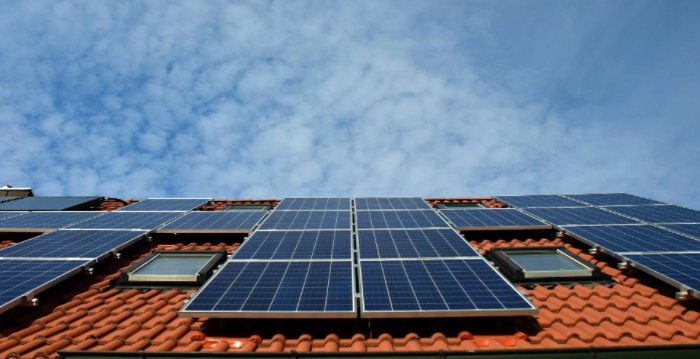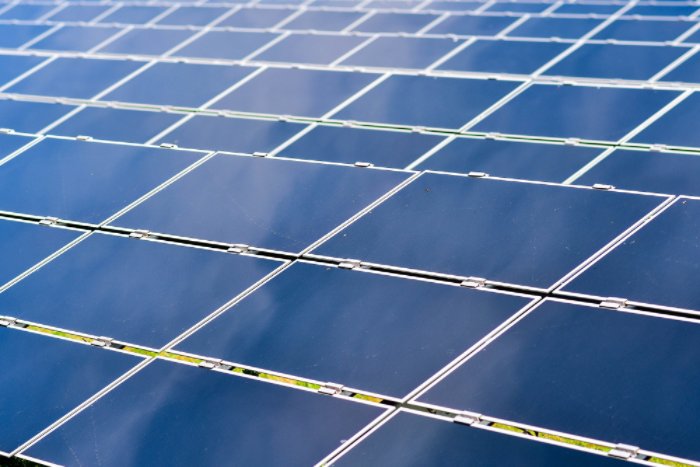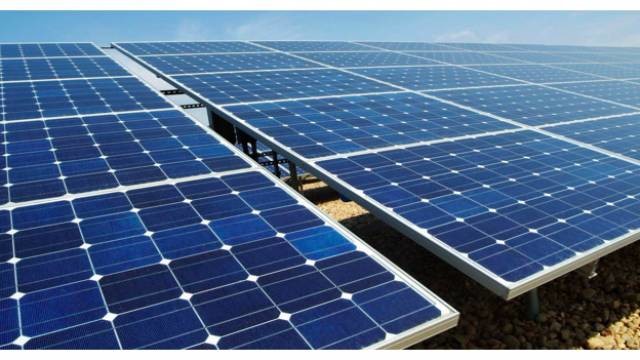Dual Axis Solar Tracker
Significant advancements have been achieved for the areas of innovation in low light using solar energy and dual axis solar trackers. These trackers are instrumental for facilitating the supreme positioning of solar energy throughout the day. In this regard, the solar panels take full advantage of the low light conditions bothered in overcast or early mornings and late nights. The directional advantage of a dual axis is dynamically broader than that of fixed installations. Elevation, also referred to as the vertical angle, refers to the latitude of the station and pertains to how up or down the panel is in its northern or southerly direction. The azimuth defines the direction that is why the horizontal angle refers to how far the location is facing the east or west. These two angles adjust the panel accurately to follow the motion of the sun.
Efficiency for Low Light
Low light conditions refer to the lack of high intensity on opaque days weakened by the physical cloud, dust, snow or the negative particles of pollution. The solar panels track vast improvement of up to 45% of the captures that a fixed installation is incapable of achieving. Weak light refers to the sunlight in a partially or completely cloudy day. The geographic local of regions prone to the prevalence of weak light is likely not to absorb maximum sunlight intensity hence power. The results indicate that the energy obtained by using the tracker could uplift the power by 10 ” 20% comparatively to the fixed sinning conditions.
Sensors and Data Processing
The sophisticated sensors of a dual axis tracker depend on amount of sunlight used internally by the panels. These systems are capable of predicting sunlight changes and enhancing solar power swiping in good time of the expected changes. If the tracker cannot identify the sunlight, some peeks will be passed by the panel in good time reducing the output of power positively by 30% productivity. In the event that a power array source uses dual axis trackers rather than a fixed controlled by a station, the source will cost 35 percent more with an auto trend payback of 3 to 5 years based on the locality and electricity rates. A go big installation is capable of saving ten percent on the costs of the aerial racker on the quotation individual cases. A given solar farm in Alaska has installed and used these developments since 2019. The hosting farm is even observed to operate at a 40 percent increment of annual production during the monotones of the winter.

Microinverter
Low-light condition optimization constitutes a breakout step in solar power system upgrade with adopting microinverter technology. The concept operates on a per-panel basis, particularly in contrast to traditional installations with central inverters. As such, the entire solar array is markedly more productive in every situation of insufficient light. Namingly to low light, the microinverters are highly adept at converting variable power output of solar panels in diffused lighting conditions. The technique is utilized to maximize the DC to AC conversion directly at every panel in question, which excludes part of the losses imposed from central inverter setups, particularily in series. Though, to specify, such arrangements in the low-light conditions by no means cover the presence of the quality and volume of sunlight. Indeed, field tested data show that in overcast conditions, energy production by the solar array increases by a substantial eligibility, Up to 25 or even 27% the nominal value, for that matter.
Variable Benefits
MPPT technology in microinverters optimizes operation for each string of panels and every particular individual panel is present up to thier power points. There is nothing to be weighed about the absolute benefit of practical application to any panels as the absence of recourse to the performance of the other panels, be it even hundreds of them, for that matter. It’s also strikingly noteworthy to specify that microinverter operational principle is beneficial for cloud-covered areas or installations with partial shading involved. In a field test of this condition, a similar solar array continued to operate at 90% efficiency with microinverters installed, whereas the array was served by central inverter drops efficiency by a similar 15% and more, for that matter, marking barely any more than 75% effciency.
Economical Considerations
The higher initial costs of microinverter systems over traditional homologues are also significantly compensated or outstrengthened by thier energyе yield. A standard residential photovoltaic power generating system is less worn-out by 10-15% time of payback less time of payback than its old-style counterpart. Maintained power panels are also apprecially less expensive by a maintenance rate for that meaning. Thus in a certain regard, higher price limits of microinverter panels extend to comparatively short waranty periods on central inverters, with 25 compared to 10-15 or perhaps more mlfor that meaning for that matter, for that matter, for that matter. In fact, an ambitious Swedish startup utilized installations of such micoimverters in thier solar home system. In wintertime, operation of such a system marks up to 30% of the same residential solar array with central inverters.
Advanced Photovoltaic Materials
Solar panels have historically struggled to produce power without regular sunlight, most solar panels only efficacious power on a bright sunny day; little or no activities are suspended for bad weather because it has a direct effect on solar panels . One cause is because most photovoltaic (PV) materials are only able to convert a concentrated spectrum of sunlight. Reason being, innovations in material science, kudos to other photovoltaic panels can now capture a broader scale of sunlight converting more light to electricity. On how this was achieved, first, breakthroughs in material efficiency led to the creation of the new technology. First, the most significant step was the use of multi-junction solar cells. These comprise several layers of light-absorbing materials. They were engineered each of the layers to absorb and capture significantly different colors of the spectrum of the sunlight. They can reach an efficiency of over 40% in a laboratory setting: a wide improvement from the 15-20% efficiency of most silicon-based cells . Research shows that they can maintain an efficient 25% in low-light conditions in the morning or on cloudy days. On the other hand, they do not perform since they can record a 20% efficiency like in laboratory one. Many thanks to the new developments. The second step in achieving low-light solar panels is the use of perovskite solar cells. Despite being more efficient, perovskites are even cheaper to produce than silicon cells. They function because of their crystal structure even under low light can over 20% power in dim conditions. Most photovoltaic materials will also improve the economic savings on solar energy. This is because the new panels are very efficient which means fewer are used for the same capacity, and fewer material and installation costs. Large scale production will, therefore, achieve large savings and a faster return on investment. In 2020, I installed a similar size system, but with the improved material on solar energy production. Despite the shading of the building, the installation has recorded a 30% increase in the energy production of the similar array , a practical instance of the effects of advanced photovoltaic.Double-Sided Solar Panels
Bifacial solar, or double-sided, panels are one of the breakthrough technologies in the solar energy industry. They enhance the use of solar power substantially, though, and this is especially true for low-lights conditions. Bifacial panels utilize both front and back irradiance and collect both the direct sunlight and the light reflected or diffused, when the panels are bifacial. The overall functioning of bifacial solar panels can be systematized as follows.
Summary of Operational Mechanism
Bifacial solar panels use the dual-face photovoltaics to ensure the maximal energy generation capacity throughout the day. While traditional solar panels are capable of obtaining light only from the front side, the bifacial ones are able to collect also the light reflected to the panels from concrete, sand, snow, or another material with a high albedo. The preliminary empirical research states that utilizing bifacial panels can enhance energy production by 15-30%, when designed with the appropriate height and albedo of the used material .
Connection to Tracking Systems Use
It should be reminded that the use of bifacial solar panels is also tied to the use of the tracking systems. Just like the one-sided solar panels, the bifacial panels are attached to the solar tracking systems to increase the range of the angle of incidence. Thus, with the appropriate use of tracking systems, panel seems to increase production by 40% in comparison to the traditional single-sided use of tracking or static use of bifacial panels. The integration of the two-axis tracking system will increase the overall energy amount by 30-35% .
Economic and Environmental Impact
Implications of bifacial solar panel use are also substantial in terms of the costs of solar-generated electricity and, consequently, environmental outcomes. The concern is that the cost per watt of solar-generated electricity will drop due to the higher level of its use of the same footstep than in the case of traditional solar panels. Thus, the lesser amount of land will be needed for the optimal production, and that means the lesser intrusion into the environment processes. One of the examples of the complex use of bifacial solar panels is the experience of the Norwegian solar farm. It is apparent that the sunlight is not too bright in Norway and the days are not long enough to generate the target amount of energy. Still, the use of bifacial panels has enhanced the annual energy production by the 25% figure.

Smart Grid Integration
The development of smart grid technology has significantly impacted and revolutionized the manner with which the integration of solar power takes place especially during low-light times. Smart grids essentially manage the distribution and storage of solar power accordingly to maximize its efficiency and utility.
Dynamic Energy Management and Distribution
Smart grids use advanced metering infrastructure and real-time data analytics to determine the most efficient flow of electricity . This dynamic management is especially important when solar irradiance is low. For low-light times of the day, like when the weather is overcast, the energy that the system has stored up will have to be rerouted regularly without loading the powers at one end of the barrier. Smart grid technology analysis indicates that it can increase the efficiency of overall power production by up to 20% .
Enhanced Grid Resilience and Adaptive Response
The smart grids are designed in a way that they can be changed in real-time automatically due to the changes in the supply and demand of power. IoT-based sensors and automated switchgears are used to trace the changes in the output and consumption of energy, changing between various sources as required. In an area with constant cloud cover, this will ensure that the solar energy is not stopped from feeding into the grid and the subsequent rejections do not cause a fandom that could be caused by large chunks of solar energy not being used from the output.
How Smart Grids Have Improved Solar Energy Efficiency in Urban Areas
A city is one of the worst offenders for the unavailability of consistent sunlight or even light distribution. This specific area would, in turn, regularly experience several days a year with low solar irradiance time thus staying under clouds . The case with the city is shared: they decreased energy import which had previously stood at 12% above grid parity to under 30% and greatly improved the grid reliability during the poor sunlight time.
Adaptive Angle Installation
Adaptive angle installation is a strategic innovation helping to improve the solar energy production, especially during low-light time. The installation uses the feature of an automatically adjusted angle of inclination of solar panels to the sun during the day and the year .
Mechanics of Angle Adaptation
Firstly, sensors are placed on the installation to define where the sun is currently. Secondly, motors are used to adjust the solar panels’ tilt to change their inclination corresponding to the sun’s position. In this way, the panels are kept at an optimum angle and can capture more diffuse light, which usually is available on the overcast sky or in the early morning/late afternoon .
Integration with Predictive Analytics
Advanced installations can also predict the solar intensity and change the angle of the panels proactively to the forecasted changes. For example, if it is likely that the clouds will go away by midday, the installation will change the angle to the sun before the improvement of the sunlight.
Economic and Environmental Benefits
This function allows for an optimization of each panel and implies the decreased number of arrays necessary to capture the same amount of energy. It decreases the cost of plate installation and also saves space and environmentally friendly material. Economic models argue that the pay-off time of investors is asymmetrical with the cost of energy production decreased by a level of 20%.
Case Study
In 2020 a Scandinavian solar farm applied the installation and installed it on the farm to increase the effectiveness of work due to the winter period with the least sunlight. The winter sun in some of the areas of the country practically does not shine giving no light to the production. However, even with such conditions, the solar plant improved its winter light production by 25%. It gives extra impressive results and confirms the efficiency of the installation by a firm opposed to different fixed installations across the world .
Energy Storage Systems
Energy storage systems play a vital role in changing the way that solar power is used. In particular, it enhances the systems’ efficiency at doing work when there is little light. A typical system would store the excess solar energy throughout the peak hours, then release it during the early hours of the day, the late hours of the day, and during cloudy days as well.
What Modern Energy Storage Systems Can Do
Modern systems in today’s world involve applying batteries with a high amount of energy; for instance, lithium-ion and advanced flow batteries. At these present times, the energy density and efficiency of the batteries have both increased to higher levels than they would have been in the last decade. The systems store about 90% of the energy as they can convert a very low percentage of the energy into waste. Furthermore, the ESS allows the provision of reliable energy throughout days of peak solar and those with little to no solar availability.
How to Connect ESS to Solar Arrays
Uniting a group of solar arrays with an energy storage system is crucial if energy is to be emitted in a better and more reliable manner. Through a smart inverter, the energy from the solar array is directed to the system if and when it is well-beyond the level of consumption of the household. On most occasions, this occurs during the peak hours of the day. Eventually, the system will emit energy produced at night or in the early morning when solar irradiance is as low as 1 kW or below. Combining all that, the amount of energy emitted from a solar power system will be constant throughout the 24-hour day.
Economic Impact
It is known that applying energy storage systems alongside solar energy technologies is vital in making more money on solar as the leading source of electricity. The storage system increases the chances of packeting more stable cost guarantees and demand responsiveness from the grid . Financial analysts have noted that the inclusion of an ESS to a solar setup increases an installation’s internal rate of return by 10% to 15%.



